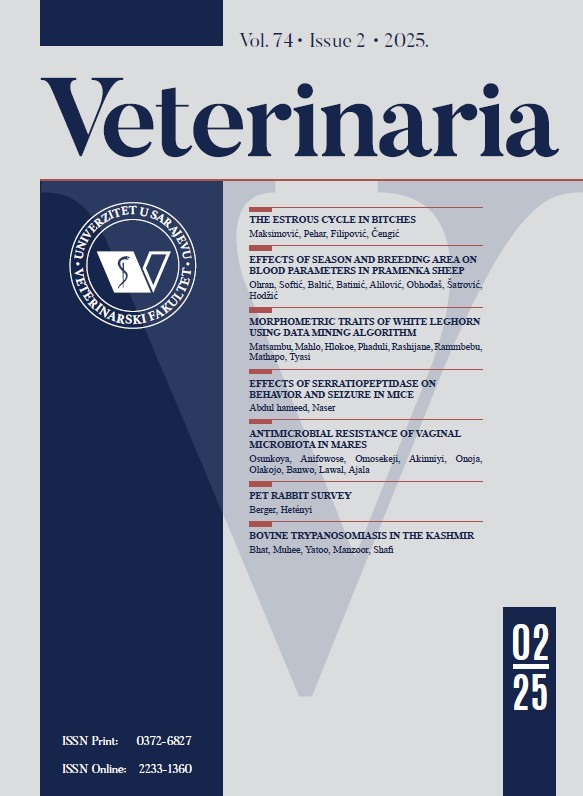Evaluation of commercial ELISA, indirect immunofluorescence test and qPCR for the diagnosis of Leishmania infantum in asymptomatic dogs from Bouira, northeast Algeria
DOI:
https://doi.org/10.51607/22331360.2021.70.1.15Keywords:
Canine visceral leishmaniasis, Leishmania infantum, zoonosis, diagnosisAbstract
Serological and molecular tests are important tools to determine and control Canine visceral leishmaniasis (CanL). The absence of pathognomonic symptoms and asymptomatic dogs make clinical diagnosis difficult. This study aims to determine the best combination for the diagnosis of Leishmania infantum in asymptomatic dogs. Ninety-four blood samples were collected from dogs in the province of Bouira, in Algeria and assessed with IFAT, ELISA, and qPCR. The sensitivity and specificity for each technique were evaluated in comparison with the indirect fluorescent antibody test (IFAT), which is considered the bestsuited test to determine the presence of L. infantum. In addition, the agreement between these tests was assessed. The use of Cohen’s Kappa coefficient demonstrated a moderate agreement between IFAT and qPCR (k= 0.475), and fair between the IFAT and ELISA (k=0.297). The sensitivity of the molecular test was higher (55.56%) than that of the ELISA (33.33%). According to those results, it is better to combine two tests for the diagnosis of CanL, especially in asymptomatic dogs, which is generally not included in the CanL control program.
Downloads
Published
How to Cite
Issue
Section
License
Copyright (c) 2021 Aicha Yasmine Bellatreche, Hacene Medkour, Radu Blaga, Delphine Le Roux, Kamel Miroud, Khatima Ait-Oudhia

This work is licensed under a Creative Commons Attribution 4.0 International License.








